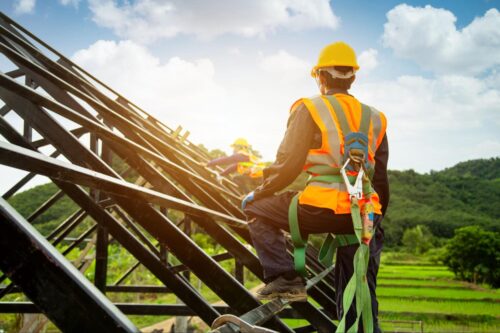Safety is of the utmost importance when working on scaffolding, as accidents can have severe consequences for workers & businesses alike. In this blog post, we will discuss the essential protocols, procedures, and physical safety measures that need to be considered to ensure a secure working environment on scaffolding.
Get The Proper Training and Experience
Proper training is crucial for anyone working on, or, around scaffolding. Workers should be educated on the correct techniques for erecting, dismantling, and using scaffolding systems, as well as understanding the potential hazards associated with working at heights. Regular refresher courses and on-site supervision can help ensure that workers remain up-to-date with the latest safety practices. Here at Southern Scaffolding, our workforce is fully trained (CISRS) and regularly receives top-up training to ensure compliance at all times.
Have The Right Safety Equipment
Utilizing the appropriate safety equipment is essential for reducing the risk of accidents. Workers should wear personal protective equipment (PPE – and no we don’t just mean masks and disposable gloves!) including hard hats, non-slip footwear, and high-visibility clothing. Fall protection measures, such as harnesses and lanyards, should also be used to prevent falls from heights. Additionally, securing tools and materials is crucial to avoid dropping hazards that could injure workers at ground level or below.
Be Aware Of Weight Restrictions
Understanding and adhering to weight restrictions is vital for maintaining the structural integrity of scaffolding. Overloading the platform can lead to collapses and serious accidents. Workers should be familiar with the weight capacity of the scaffolding system and ensure that they do not exceed the limits.
Weather Conditions: Emergency Preparedness
Adverse weather conditions can significantly impact the safety of workers on scaffolding. Strong winds, rain, and icy surfaces can make working at heights particularly dangerous. Workers should be trained in emergency preparedness to respond effectively to unexpected weather events. This includes knowing when to stop work, securing the scaffolding, and establishing clear communication channels with team members.

Prep Like You Have An Inspection
One of the best ways to ensure safety on scaffolding is to maintain a mindset that an inspection could occur at any time. This means keeping the work area clean and organized, regularly checking for potential hazards, and promptly addressing any safety concerns. By treating every day as if an inspection is imminent, workers and business owners can foster a culture of safety and accountability on the job site.
Conclusion
Keeping yourself safe when working on scaffolding is a critical responsibility for workers and business owners alike. By prioritizing proper training, using the right safety equipment, being aware of weight restrictions, preparing for adverse weather conditions, and maintaining an inspection-ready mindset, you can significantly reduce the risk of accidents and create a secure working environment. Remember, safety is everyone’s responsibility – stay vigilant and always prioritize the well-being of your team.
Ensure the safety and success of your next job by partnering with Southern Scaffolding, scaffold experts with 20+ years of experience in the industry. Our dedication to safety and tailor-made scaffold solutions will give you the peace of mind you need to focus on your project’s success.
Contact Southern Scaffolding today and experience the difference our expertise can make for your project.